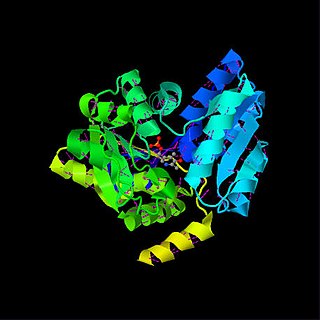| 3-hydroxybutyryl-CoA dehydratase | |||||||||
|---|---|---|---|---|---|---|---|---|---|
 3-hydroxybutyryl-CoA dehydratase homotrimer, Myxococcus xanthus | |||||||||
| Identifiers | |||||||||
| EC no. | 4.2.1.55 | ||||||||
| CAS no. | 37290-82-7 | ||||||||
| Databases | |||||||||
| IntEnz | IntEnz view | ||||||||
| BRENDA | BRENDA entry | ||||||||
| ExPASy | NiceZyme view | ||||||||
| KEGG | KEGG entry | ||||||||
| MetaCyc | metabolic pathway | ||||||||
| PRIAM | profile | ||||||||
| PDB structures | RCSB PDB PDBe PDBsum | ||||||||
| Gene Ontology | AmiGO / QuickGO | ||||||||
| |||||||||
The enzyme 3-hydroxybutyryl-CoA dehydratase (EC 4.2.1.55) catalyzes the chemical reaction
- (3R)-3-hydroxybutanoyl-CoA crotonoyl-CoA + H2O
This enzyme belongs to the family of lyases, specifically the hydro-lyases, which cleave carbon-oxygen bonds. The systematic name of this enzyme class is (3R)-3-hydroxybutanoyl-CoA hydro-lyase (crotonoyl-CoA-forming). Other names in common use include D-3-hydroxybutyryl coenzyme A dehydratase, D-3-hydroxybutyryl-CoA dehydratase, enoyl coenzyme A hydrase (D), and (3R)-3-hydroxybutanoyl-CoA hydro-lyase. This enzyme participates in butanoate metabolism.





